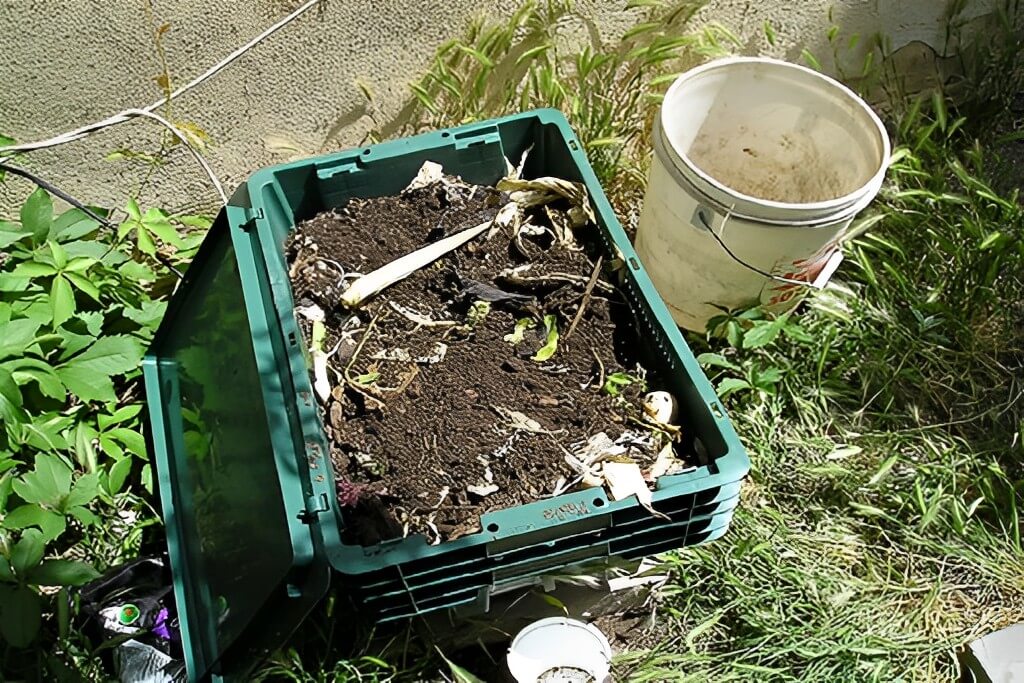Using Outdoor Soil For Indoor Plants: Factors To Consider
What Factors To Consider For Use Soil
There are some factors to consider before using outdoor soil for indoor plants, including:
- Pests and Diseases: Outdoor soil may contain harmful pests and diseases that can damage your indoor plant. It’s important to ensure the soil is free of these contaminants before use.
- Nutrient Imbalances: Outdoor soil may be not suitable for indoor plants as it may contain too much or too little of certain nutrients. It’s important to test the soil to ensure it’s suitable for your specific plant.
- Drainage: Outdoor soil may not have the proper drainage required for indoor plants. It’s important to ensure the soil can drain excess water and prevent waterlogged soil, which can cause root rot and another issue.
What happens if you use outdoor potting soil for indoor plants?
Using outdoor potting soil for indoor plants can lead to poor drainage and aeration, as well as the risk of introducing pests or diseases. This can cause stunted growth or even damage to the indoor plant.
Can you use regular garden soil for indoor plants?
No, not using regular garden soil for indoor plants, as it can be too dense and lack proper drainage for potted plants. Instead, it’s better to use a high-quality potting mix specifically formulated for indoor container plants.
Is there a difference between indoor and outdoor potting mix?
Yes, there is a difference between indoor and outdoor potting mix. Indoor potting mixes are typically formulated to provide optimal moisture retention and aeration for indoor plants, while outdoor potting mixes may have enhanced drainage and nutrient levels to accommodate the needs of outdoor plants exposed to varying weather conditions.
Can you use outdoor soil for potted plants?
Using outdoor soil for potted plants is not recommended. Outdoor soil is often heavy, compacted, and may contain pests, weed seeds, or pathogens that can harm potted plants. It is best to use a high-quality potting mix specifically designed for container gardening to ensure proper drainage, aeration, and nutrient balance for healthy plant growth.
What Soil To Use For Indoor Plants

When choosing soil for your indoor plants, it’s important to consider the specific needs of the plant you’re growing. In general, indoor plants thrive in a soil mix that is well-draining and nutrient-rich. Here are some general guidelines for choosing soil for indoor plants:
Use a high-quality potting mix: Potting mix is specifically formulated for container gardening and typically contains a blend of organic matter, such as peat moss, vermiculite, and perlite, which helps with drainage and aeration. Look for a potting mix that is labeled as ”indoor” or ”houseplant”.
Avoid garden soil: Garden soil is often too dense and heavy for indoor plants and may not provide adequate drainage. Use clean soil for Indoor plants.
Consider adding perlite or sand: If your potting mix doesn’t already contain perlite or sand, you can add some to improve drainage. Perlite is a lightweight volcanic rock that helps to create an air pocket in the soil, while sand can help to increase drainage.
Add nutrients: Many potting mixes contain fertilizer, but you may also want to consider adding some organic matter, such as compost or worm castings, to provide additional nutrients for your plants.
https://googleads.g.doubleclick.net/pagead/ads?gdpr=0&client=ca-pub-2008382440073891&output=html&h=280&adk=2390199962&adf=2014463989&pi=t.aa~a.3058588037~i.13~rp.4&w=810&fwrn=4&fwrnh=100&lmt=1706296958&num_ads=1&rafmt=1&armr=3&sem=mc&pwprc=7598817055&ad_type=text_image&format=810×280&url=https%3A%2F%2Fgardencew.com%2Fcan-i-use-outdoor-soil-for-indoor-plants%2F&fwr=0&pra=3&rh=200&rw=809&rpe=1&resp_fmts=3&wgl=1&fa=27&uach=WyJXaW5kb3dzIiwiMTUuMC4wIiwieDg2IiwiIiwiMTIwLjAuNjA5OS4yMjUiLG51bGwsMCxudWxsLCI2NCIsW1siTm90X0EgQnJhbmQiLCI4LjAuMC4wIl0sWyJDaHJvbWl1bSIsIjEyMC4wLjYwOTkuMjI1Il0sWyJHb29nbGUgQ2hyb21lIiwiMTIwLjAuNjA5OS4yMjUiXV0sMF0.&dt=1706296960103&bpp=3&bdt=985&idt=3&shv=r20240122&mjsv=m202401180101&ptt=9&saldr=aa&abxe=1&cookie=ID%3D23c094e2ce763c19%3AT%3D1706295883%3ART%3D1706296796%3AS%3DALNI_Ma46GsGtKa30du8bjOGWIlY7X2FeQ&gpic=UID%3D00000d0209d4ae66%3AT%3D1706295883%3ART%3D1706296796%3AS%3DALNI_MbuzIlEjogSdo7PwKlrRzIXr5J79g&prev_fmts=0x0%2C1200x280%2C810x280%2C810x280&nras=5&correlator=3472088016830&frm=20&pv=1&ga_vid=1750421442.1706296959&ga_sid=1706296959&ga_hid=1678989155&ga_fc=0&u_tz=-480&u_his=2&u_h=768&u_w=1366&u_ah=720&u_aw=1366&u_cd=24&u_sd=1&dmc=8&adx=54&ady=3170&biw=1349&bih=599&scr_x=0&scr_y=776&eid=44759876%2C44759927%2C44759837%2C95320869%2C95320894%2C95321627%2C95322162%2C31078663%2C31078665%2C31078668%2C31078670&oid=2&pvsid=2087499608108055&tmod=2108055511&uas=1&nvt=1&ref=https%3A%2F%2Fgardencew.com%2F&fc=1408&brdim=0%2C0%2C0%2C0%2C1366%2C0%2C1366%2C720%2C1366%2C599&vis=1&rsz=%7C%7Cs%7C&abl=NS&fu=128&bc=31&bz=1&td=1&psd=W251bGwsbnVsbCxudWxsLDNd&nt=1&ifi=5&uci=a!5&btvi=3&fsb=1&dtd=10800
What’s The Difference Between Indoor And Outdoor Compost
Indoor

Indoor and outdoor composting are both effective ways to create nutrient-rich soil for gardening, but they differ in their methods and requirements. Indoor composting is typically done in a small container or bin that is placed inside your home, such as in your kitchen or pantry. This method of composting is great for those who live in apartments or have limited outdoor space. Indoor composting typically uses worms, known as red wigglers to break down food scraps and other organic matter. This process is known as vermicomposting. Indoor composting can produce high-quality, often within just a few months. However, it requires careful attention to moisture levels and the added fresh food scraps regularly to keep the worms healthy and active.
Outdoor

Outdoor composting is typically done in a large bin or pile in your lawn back yard in the garden. This method of composting is great for those with ample outdoor space and who have a large amount of organic matter to compost, such as yard waste and fallen leaves. Outdoor composting typically uses a mixture of brown materials, such as dried leaves or straw, and green materials, such as grass clippings and food scraps, to create a balanced compost pile. Outdoor composting can take several months to a year to produce compost, depending on the conditions and size of the pile. The method of composting does not require as much attention as indoor composting, but it does require occasional turning or mixing of the pile to promote even decomposition and aeration.
Conclusion
While outdoor soil can be used for indoor plants, it’s important to sterilize and consider the specific needs of indoor plants. It’s recommended to use a soil mix designed for indoor use, and there are different methods for indoor and outdoor composting.